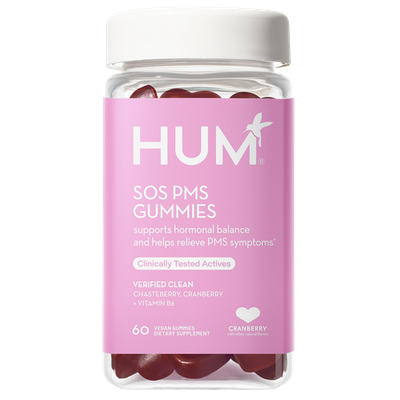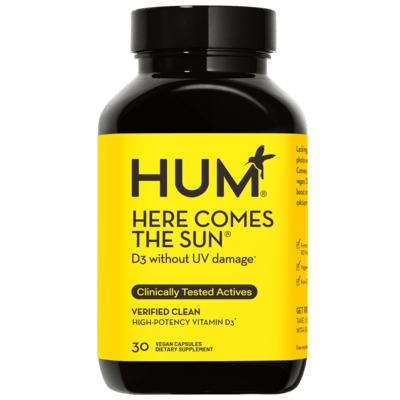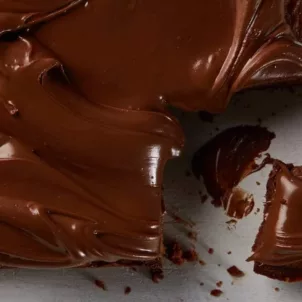PMS symptoms getting you down? Upgrade your diet for natural relief. Gaby Vaca-Flores, RDN, CLE, lists the best foods for PMS, covering how and why their key nutrients are effective to ease bloating, mood imbalances, and more.
Did you know that an estimated 3 out of 4 women report experiencing PMS at some point in their life? With such prevalence, it’s no surprise that there are many remedies for PMS floating around. Nutrition is undoubtedly a PMS remedy that has been tried and true. In this post, we’ll cover some of the top foods that help PMS, including how they can help you feel your best during your period.
The Connection Between Nutrition and PMS
Everything from the position that you sleep in to soaking your feet in warm water can have an effect on PMS. Naturally, what you eat is no exception. Research shows that dietary habits are linked to PMS symptoms (or a lack of thereof).
As you may guess, some foods have the potential to make you feel better during your period, whereas others can amplify symptoms like irritability, bloating, and cramps. In particular, Western diet staples have earned a poor reputation for exacerbating mental and physical PMS symptoms.
Some foods that may worsen PMS include:
- Foods high in salt
- Foods high in refined sugars
- Red meat
- Caffeine
- Alcohol
As a dietitian, I believe that it’s important to emphasize the foods that you should have more of, rather than dwell on foods that you need to eliminate. After all, struggling with PMS is hard enough. If enjoying a sweet or salty treat will bring you some comfort, simply aim to enjoy it in moderation.
In the meantime, considering adding these foods to your shopping list to help kick your PMS symptoms to the curb.
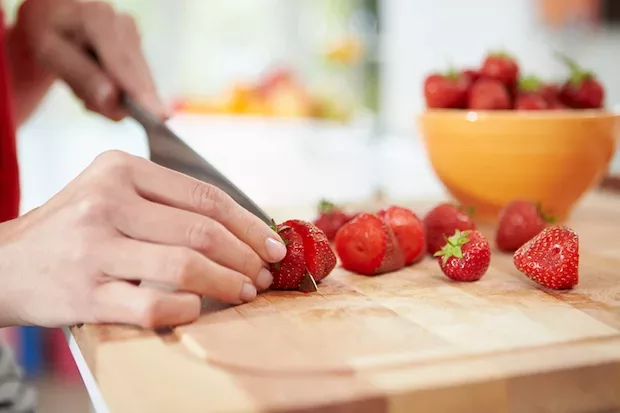
9 of the Best Foods for PMS
1. Strawberries
Consuming strawberries regularly is one of the best ways to lower your chances of experiencing PMS. A cross-sectional study found that the percentage of women without complaints of PMS was higher in those who ate strawberries daily compared to those who didn’t. Researchers believe that this benefit is related to the high antioxidant and low inflammatory properties of the fruit.
2. Olive Oil
Cooking with olive oil may also be your ticket to easing PMS pain. Many PMS symptoms—including cramps and heavy flow—are related to oxidative stress that leads to higher concentrations of calcium and a substance called prostaglandin in the uterine muscles. Oleocanthal, the polyphenolic compound in olive oil, is known to have a protective protective mechanism that allows for less oxidative stress.
In addition, one cross-sectional study found a significant difference in the amount of menstrual flow in women who consumed olive oil daily compared to those who did not.
Also worth noting: Olive oil is a staple fat in the Mediterranean diet. This diet is associated with lower PMS prevalence, among countless additional benefits for overall health and longevity.
3. Bananas
Bananas are a great snack to reach for leading up to and during your period. They are high in vitamin B6, a nutrient that has long established its ability to improve mood-related PMS symptoms. While the mechanism linking B6 to mood and PMS isn’t fully understood, it is likely related to the vitamin’s role as a co-enzyme for several neurotransmitters.
HUM’s SOS PMS gummies also pack vitamin B6 for relief from PMS-induced mood imbalances—as well as chasteberry to promote hormonal balance and cranberry juice powder to support a healthy urinary tract.
4. Pinto Beans
Pinto beans are high in calcium, a mineral that is associated with more than just strong bones and teeth. A systematic review found an association between people who consumed adequate amounts of calcium and less severe PMS symptoms including fatigue and bloating.
Additionally, pinto beans provide iron, a mineral that is often lost through menstrual bleeding. As such, low iron levels can increase your risk of experiencing PMS symptoms.
5. Salmon
Salmon is among the best foods for PMS. Make sure to add it to your weekly rotation, especially about two weeks before the start of your period (also known as the luteal phase). Salmon is a great source of vitamin D, and research shows that low vitamin D levels during the luteal phase can either trigger or worsen PMS symptoms.
Since vitamin D can be challenging to get through food alone, you can also consider supplementing. Our pick: HUM’s Here Comes the Sun, which offers 2,000 IU of vegan D3.
Moreover, salmon also delivers omega-3 fatty acids. Scientific evidence suggests that these types of fatty acids can help improve mood changes such as nervousness and lack of focus that can occur during your period. Omega-3s are also known to reduce common physical symptoms such as headaches and bloating.
6. Yogurt
Dairy products such as yogurt can be beneficial to incorporate into your diet, particularly when it comes to the battle against PMS. Yogurt can help contribute to your overall calcium and vitamin D intake which, as we know, is important for keeping PMS symptoms at bay.
Further, yogurt delivers protein, a satiating macronutrient that can help curb even the strongest PMS-related food cravings.
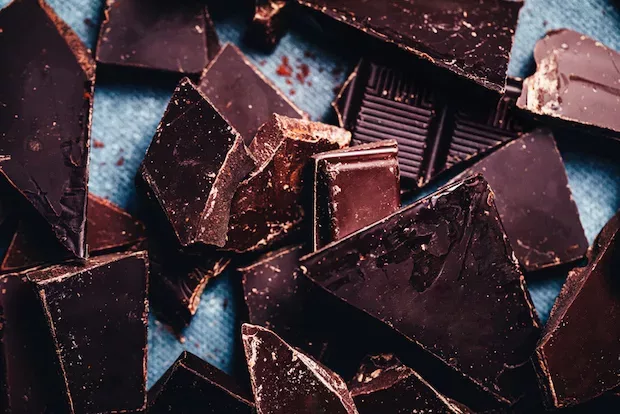
7. Dark Chocolate
A sweet treat with benefits, dark chocolate can help improve how you feel during your period. On average, a 100-gram serving of dark chocolate provides 252.2 milligrams of magnesium and 10.9 milligrams of iron.
Magnesium can be incredibly helpful in easing the severity of PMS symptoms, according to a literature review. Similar to iron, researchers share that low magnesium levels can worsen PMS symptom severity.
8. Chamomile Tea
Chamomile tea is widely used for a variety of ailments. It’s a traditional remedy for muscle spasms, making it a great option for those who struggle with cramps during their period.
Additionally, it’s a soothing alternative for caffeinated products that can exacerbate PMS symptoms like cramps, irritability, and breast tenderness.
9. Pecans
Pecans make for a tasty snack that are also high in manganese, a mineral known for its role in circulatory health. A study found that when paired with calcium, manganese can help improve pain and mood changes that occur during PMS.
The Takeaway
Nutrition plays an important role in your menstrual cycle—and you can definitely use it to your advantage to stave off the not-so-pretty side effects that come before (and alongside) menstruation. Certain foods can help you feel better during your period while others can trigger PMS symptoms. When in doubt, remember that items that offer antioxidants, vitamin D, calcium, omega-3s, and manganese are among the best foods for PMS.
